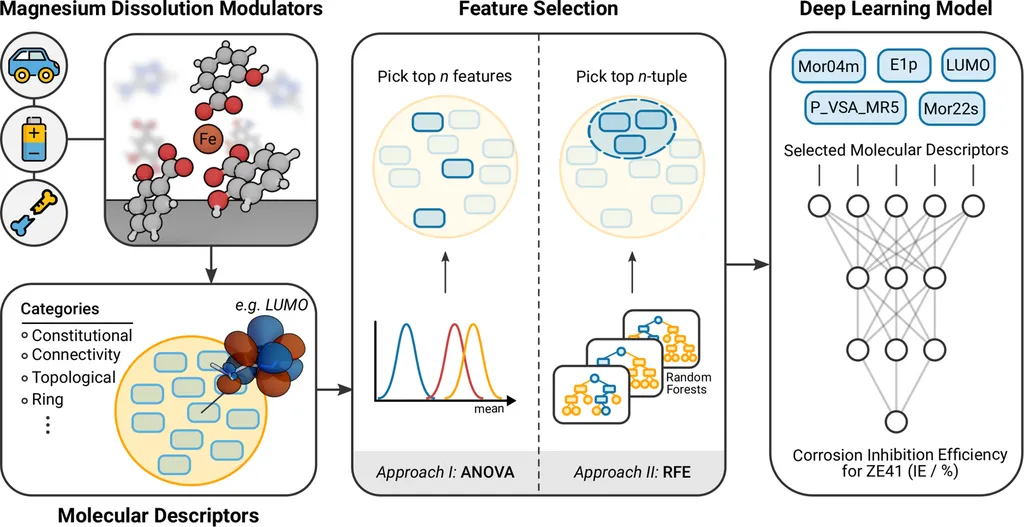In a groundbreaking development poised to revolutionize the energy sector, researchers have harnessed the power of machine learning to predict the mechanical behavior of high-pressure die-cast magnesium-based alloys with unprecedented accuracy. This innovation, led by Reliance Jain from the Department of Materials Science and Engineering at Ajou University in South Korea and the Prestige Institute of Engineering Management and Research in India, promises to accelerate the development of lightweight, high-performance alloys crucial for energy-efficient applications.
The study, published in the *Journal of Magnesium and Alloys* (translated as *Journal of Magnesium and Its Alloys*), addresses a longstanding challenge in the field: the costly and time-consuming process of optimizing alloy compositions through experimental methods. By leveraging machine learning techniques, Jain and his team have developed a predictive model that significantly cuts down on both time and resources.
“Traditionally, developing new alloys involves a lot of trial and error, which is expensive and slow,” Jain explained. “Our approach uses machine learning to predict how different alloying elements will affect the mechanical properties of magnesium-based alloys, allowing us to identify the best compositions much faster.”
The research team trained six different machine learning models—extra trees, CatBoost, k-nearest neighbors, random forest, gradient boosting, and decision tree—on a dataset of alloy compositions and their corresponding mechanical properties. Among these, the CatBoost model emerged as the top performer, achieving remarkable prediction accuracies with R2 scores of 0.95 for ultimate tensile strength and 0.92 for yield strength. Further validation using published datasets confirmed its reliability, with equally impressive results.
“This level of accuracy is a game-changer,” Jain said. “It means we can now predict the performance of new alloys with a high degree of confidence, which will significantly speed up the development process.”
The implications for the energy sector are substantial. Lightweight magnesium-based alloys are increasingly in demand for applications ranging from electric vehicles to aerospace, where reducing weight can lead to significant energy savings. High-pressure die casting, a common manufacturing process for these alloys, requires precise control over composition to achieve optimal mechanical properties. The predictive model developed by Jain and his team could streamline this process, making it easier and more cost-effective to produce high-performance alloys.
“This research opens up new possibilities for the development of lightweight materials that are crucial for energy efficiency,” Jain noted. “By reducing the time and cost associated with alloy development, we can accelerate innovation in the energy sector.”
The study’s findings not only highlight the potential of machine learning in materials science but also underscore the importance of interdisciplinary collaboration. By combining expertise in materials engineering and data science, Jain and his team have demonstrated how advanced technologies can drive progress in traditional industries.
As the energy sector continues to evolve, the demand for lightweight, high-performance materials will only grow. The predictive model developed by Jain and his team represents a significant step forward in meeting this demand, offering a powerful tool for researchers and manufacturers alike.
With the publication of this research in the *Journal of Magnesium and Alloys*, the stage is set for a new era of innovation in alloy development. As Reliance Jain and his colleagues continue to push the boundaries of what’s possible, the future of lightweight materials looks brighter than ever.

